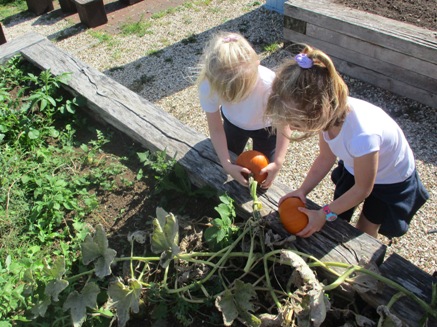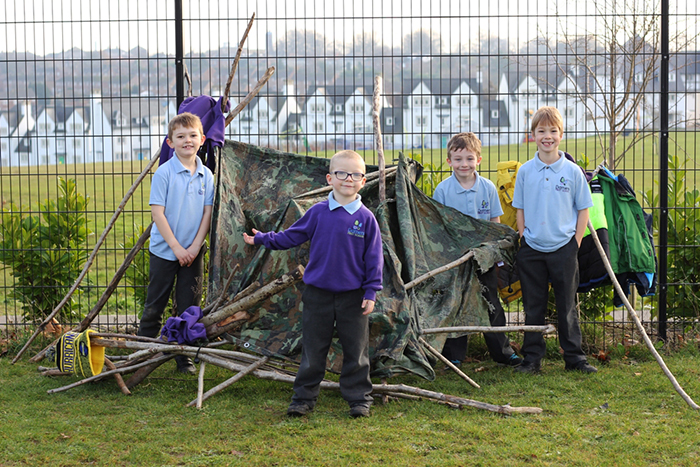
Learning From and Within Nature
Outdoor Learning
We believe that the outdoor environment is a rich, dynamic and natural space for learning and development in children of all ages. We also believe that being outside is vital for our pupils’ physical health, emotional well-being and cognitive development. When outdoors, children have the freedom to explore and develop their physical boundaries, to take risks and to discover the real world with all their senses. This can have huge positive effects on a child’s self esteem and confidence.
Outside can be liberating; children have room to be active, noisy, messy and work on a large scale. Outside is dynamic; you cannot predict what might happen, and as such it provides opportunities to experience and develop emotions, what they feel like and how to deal with them.
Access to learning outside of the classroom, either in a man-made environment, such as a playground, or a natural environment, enables children to learn in ways that the indoor classroom does not: concepts can be explored on a grander scale, blown up in size and multiplied. Mess can more easily be made to explore and investigate. Children can develop their tidying and organising routines. Fresh air, rain, wind, sunshine and other elements bring the children into close contact with nature and enable them to experience the wonder of the outdoor world first hand. Questions arise outdoors which can only be explored outside and physical exercise and spatial understanding are developed.
Our rationale
We offer outdoor provision based on the following key conclusions about the essential value of outdoor learning:
-
Being outdoors has a positive impact on children’s sense of well-being, engagement and helps all aspects of children’s development, including physical, emotional and social
-
Playing, learning and exploring outdoors all offer opportunities for children (and adults) to engage, solve problems and do things in different ways
-
Outdoors environments offer a chance to experience learning on a different scale in comparison to being indoors
-
Being outdoors gives children first-hand, formative contact with the weather, seasons and the natural world.
-
The outdoor environment is liberating and can offer children the freedom to explore, use their senses and be physically active and exuberant.
-
The outdoor environment usually offers more freedom and space to move, and inspires different movement from that indoors. This is vital for young children to develop their coordination, build muscle mass and experiment with moving their bodies.
-
Every child has a right to daily outdoor learning and as much value should be placed on the outdoor environment as inside. The same amount of resources, planning, time, and money should go into providing the outdoor space as the indoor one. It is not an optional extra.
What is outdoor learning?
Outdoor learning is not a subject in itself; it is a vital method for teaching and learning in every subject. It has no curriculum of its own. Instead, each area of the curriculum is taught both inside the classroom and outside of it. This involves learning activities in the school grounds, including our wonderful pond area and school garden, forest school sessions led by Forest-school trained school staff, activities in the Poundbury area, visits and trips in the wider local area, or pupils staying for a few days at an outdoor education centre.

The following are some examples of how outdoor learning has been implemented at Damers First School:
-
Foundation creating their own garden area in their outdoor space.
-
Year 1 half-termly “welly walks”, including to Poundbury Hillfort.
-
Year 2 mapping and field work in the school grounds
-
Year 3 trip to Lulworth Cove.
-
Year 4 residential visit to Leeson House, near Swanage, learning orienteering and geography field work skills and engaging in a range of activities including coastal walks and pond dipping.













